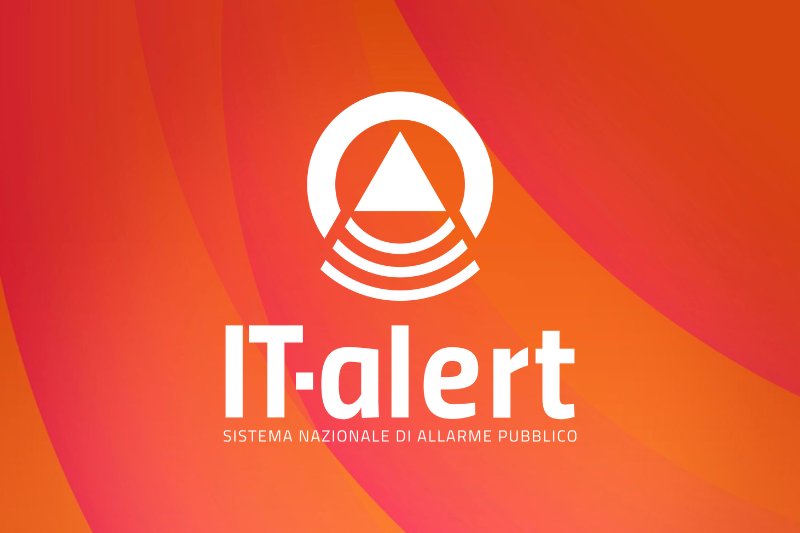IT-alert: the national public warning system
The system broadcasts alert messages to mobile phones in a specific geographical area in case of upcoming or ongoing major emergencies or disasters.

IT-alert is the new public warning system that provides immediate information to the population. It broadcasts alert messages to mobile phones in a specific geographical area in case of upcoming or ongoing major emergencies or disasters.
From 13 February 2024, IT-alert is operational for the following civil protection hazards:
• Nuclear accident or radiological emergency situation
• Major accidents at industrial facilities;
• Collapse of a large dam;
• Volcanic activity in the areas of the Phlegraean Fields, Vesuvius, and at the island of Vulcano.
For the risk scenarios of heavy rainfall, earthquake-generated tsunami, and Stromboli volcanic activity, the testing phase has been extended for another year.
At this stage of first operativity of the system, the Department of Civil Protection is in charge of sending IT-alert messages. However, in the future, as provided by the Directive of the Minister for Civil Protection and Sea Policies of February 7, 2023, all parts of the National Civil Protection Service will be allowed to use IT-alert.
The national public warning system integrates the existing information and communication methods for different risk scenarios in order to promote the rapid dissemination of early information on potential dangerous situations to the public and the implementation of self-protection measures in relation to the specific risk. All relevant information on the public warning system can be found at www.it-alert.gov.it/en.
T-alert is a public service that sends messages to the devices in the area affected by a major emergency or an imminent or ongoing catastrophic event and helps provide timely information to potentially affected people, reducing individual and collective exposure to danger.
IT-alert messages run through cell broadcasts. Any active mobile device connected to the cells of mobile phone operators' networks can receive an "IT-alert" message provided it is turned on.
Thanks to cell-broadcast technology, the IT-alert messages can be delivered within a group of geographically close telephone cells, bounding an area that corresponds to that affected by the emergency as closely as possible.
The IT-alert service, as required by the Directive (EU) 2018/1972 for public warning systems and the Italian Electronic Communications Code, will be activated in the case of upcoming major emergencies or disasters.
Suppose you receive an IT-alert message concerning one of these scenarios. In that case, it means that you are in a potentially dangerous situation and that an emergency is upcoming or already in progress.
owever, IT-alert alone is not enough. It requires, in fact, risk awareness among the people receiving the message, which is achieved through knowledge of the territory, civil protection planning and proper behavior in emergency situations. For more information, visit the I don't take risks website.